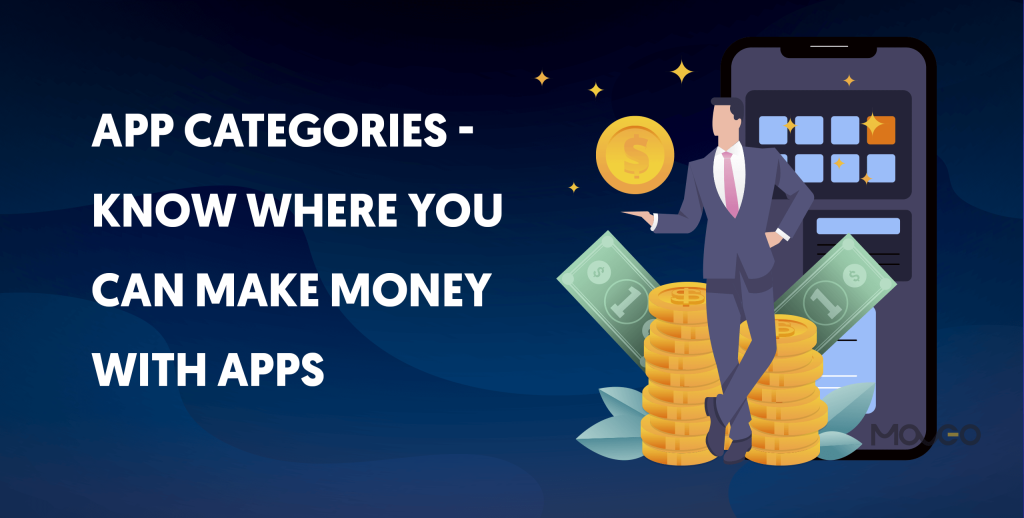
Mobile apps are a way of life. Whatever you want to do, there’s an app for it. There being over 3 billion apps in the app stores today, classifying them into mobile app categories is crucial for discovery and understanding.
In this blogpost, we shall take a look at all the different types of apps to help you make informed decisions about how to develop apps that make money and how to market them effectively for maximum success.
Types of apps by technology
Mobile apps differ from each other based on the technology they are built with. The three primary classifications in mobile apps by their technology are – Native apps, Web apps and Hybrid apps. A fourth type – the PWA or progressive web apps – are another type of apps that started off as an advancement in web apps, but have now become a major category of their own. Let’s discuss each of these in detail.
Native Apps
The vintage gold standard in mobile apps – something that is of the highest quality and value but often gets replaced by a more cost effective, modern solution.
Native apps are written in a specific programming language that works on a specific operating system. So an Android app would be written in an Android language like Java or Kotlin. An iOS app would have to be written in Objective-C or Swift.
This means that for an app to work on Android as well as iOS devices, it would have to be coded two times over. This makes native app development a longer and more expensive process requiring a full team of iOS and Android developers.
However, at the end of this long process, you end up with an app that fits like a glove on the user’s device. It looks custom made (because it is), works flawlessly, integrates device hardware seamlessly and just provides an unmatched user experience.
Some of the most popular native apps are:

Web Apps
Web apps are a type of apps that can be accessed over an internet browser. Once you enter the app, the browser interface disappears and the app covers the entire screen to provide an immersive experience.
The best thing about web apps is that they eliminate a crucial barrier – the installation step – encouraging more people to use the app without worrying about using up space on their device or even the simple reluctance to download yet another app.
As for development, web apps can be coded just once and used on any device with an internet connection. This makes web apps easier and more cost effective to develop.
As for a few disadvantages they have, web apps tend to have lesser features that native apps. They cannot work when the device is offline and being on the browser, they can potentially be exposed to more security risks than native apps.
Hybrid Apps
Hybrid apps – as the name suggests – are a middle ground between native apps and web apps. They can be coded once and deployed on different operating systems. This is done by writing the basic code once and then customizing key front-end elements for each operating system separately. Modern cross-platform languages like React and Flutter can achieve up to 80% code reusability, allowing significant reduction in development times for hybrid apps.
Hybrid apps have significantly risen in popularity over the last few years and an increasing number of businesses need mobile apps to strengthen their digital business but do not wish to spend hefty amounts of money that native app development requires.
Hybrid apps offer a larger market appeal – Android, iOS and other OS devices, at a fraction of the cost of native app development. They also have shorter development cycles and faster time to market, all making them a luring prospect for app developers and business owners.
Hybrid apps offer rich, immersive user experiences and great functionality even at their lower price tag, making them a great business solution.
Hybrid apps however, may not be the best option for businesses that need a heavy-performance mobile app that needs to do a lot of work, handle big transactions, high traffic or high-definition media. Complex functions can slow down these apps and they tend to be less interactive.
Major examples of hybrid apps include:

Progressive Web Apps – PWA
Progressive web apps or PWAs are mobile apps that work like an extension of a website accessed over a browser. These can be saved on your device, and used like an app, by simply storing a bookmark on your device.
As they are based in the web, they can be accessed on any device with any operating system, making PWAs an ideal solution for businesses that need a quick-fix to digital presence.
PWAs use APIs and browser functionalities to bring a native app like experience to users without taking up much space on their devise. They are more like a webpage that lives on your device and mimics an app like experience.
PWAs load up very quickly and take up very little bandwidth, making them immensely usable by all kinds of users, even those with slower internet speeds and limited data allowances. Also, they are automatically updated every time they are accessed, making them even more hassle free. No installation is required eliminating barriers to use and significantly increasing engagement.
As you can tell, PWAs offer enticing advantages for users, developers as well as business owners. They can have their share of shortcomings too. For instance, they cannot leverage all hardware features, have some problems with OS integrations and are susceptible to browser limitations.
Despite these, PWAs are a great solution for businesses that need quick working apps at lower cost and faster time to market.
Some prominent examples of progressive web apps are:

